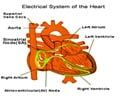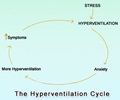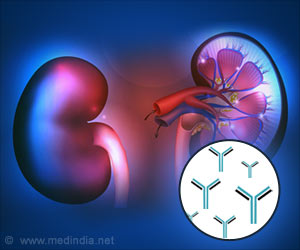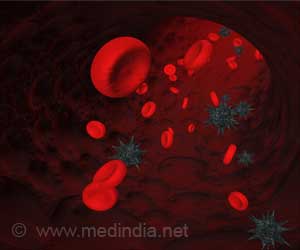US researchers have identified new blood markers to determine heart attack quickly. That could ensure more rapid treatment.
US researchers have identified new blood markers to determine heart attack quickly. That could ensure more rapid treatment and thus limit damage to heart muscle.
A study led by investigators from Massachusetts General Hospital (MGH) and the Broad Institute of Harvard and MIT reports that a new technique that measures hundreds of molecular markers in the blood can identify those released when cardiac tissue is injured by a lack of oxygen. The report will appear in the October Journal of Clinical Investigation and has received early online release."Right now there are no blood markers for reversible myocardial injury in clinical use, and the only available markers are not detectable until hours after the onset of tissue damage. Because our treatments for heart attacks are most effective in the first hours after symptoms occur, these newly identified markers could help us apply treatments sooner and help more patients," says the study's senior author Robert Gerszten of the MGH Division of Cardiology and Center for Immunology and Inflammatory Diseases.
Every metabolic activity in the body results in the production of metabolites, molecules released in often-minute quantities. A blood sample contains hundreds of these metabolites that could provide a chemical 'snapshot' of an individual's heath status. But the technology to assess metabolite levels is in the early stages, as is the understanding of their significance. For instance, how much metabolite levels normally vary between healthy individuals and factors that influence those variations is still unknown.
In the current study, the research team took advantage of a procedure that is, in essence, a planned heart attack. In a condition called hypertrophic cardiomyopathy, bloodflow out of the heart is obstructed by a massive thickening of the wall between the left and right sides. This tissue overgrowth can be treated with a technique pioneered by Michael Fiferth of MGH and called septal ablation.
It destroys the excess tissue, a scenario that mimics the damage that happens to heart muscle when its blood supply is cut off. Taking blood samples before and after patients receive this procedure provides a unique window into metabolic changes that occur in response to the death of myocardial tissue, allowing study participants to act as their own controls.
The researchers analyzed blood samples from 36 patients taken before and at several time points after septal ablation. Using an advanced mass spectrometry system that can assess hundreds of metabolites in as little as 10 minutes, they were able to identify several that significantly changed right after the ablation process, a time period during which currently available markers remained unchanged. The changes seen in the first 10 minutes persisted an hour later, and analysis of blood from veins in the coronary circulation confirmed that the heart was the source of the changes.
Advertisement
"This work is proof of principle that this new technology will work for diagnosis and may also help us find new targets for therapeutic intervention. Someday we may be able to reverse the damage from a heart attack with a 'cocktail' of protective metabolites," explains Gerszten, who is an associate professor of Medicine at Harvard Medical School and a senior associate member of the Broad Institute.
Source-Eurekalert
GPL/L













